Kelly Carmichael – 17 August, 2013
Advances in technology during WWII and the indoor-outdoor aesthetic made possible by a benign climate saw modernism take a significant leap, moving towards distinctive style and way of making that echoed the unprecedented population boom, climate, informality and carefree prosperity that California seemed to offer. Here designers not only defined a lifestyle, but created the Californian dream and stimulated a desire to live it.
Auckland
Assorted designers
Californian Design 1930-1965: Living in a Modern Way
6 July - 29 September 2013
Referencing émigré designer and architect Greta Magnusson Grossman’s idea that California design “is not a superimposed style, but an answer to present conditions… It has developed out of our own preferences for living in a modern way”, California Design 1930-1965: Living In A Modern Way reveals how design of the period not only reflected but also generated changes in how life was lived and imagined during this time.
This exhibition, currently on show on Level One of Auckland Art Gallery, takes its cue from a period when people were pouring into California from all over the US and the wider world. Along with many leading modernists escaping war in Europe, perhaps the best-known designers of this era and practically synonymous with the state, Charles and Ray Eames, moved to Los Angeles from Michigan themselves, contributing to a period when California was a major leader in design.
On display are ceramics, furniture, fashion, jewellery, moving image and industrial and graphic design; all indicative of the optimism and relentless redefining of contemporary life characteristic of a golden era impatient to embrace the future. Represented are works by Julius Shulman, Frank Lloyd Wright, the Eames, Richard Neutra and others alongside items of stylish domesticity, such as the lust-worthy ‘ice gun’, one of the first items you encounter in the exhibition and poised ready to shoot perfectly shaped ice cubes into a drink. Spread over seven rooms at the Auckland Art Gallery, California Design is organised into four thematic sections. Shaping, Making, Living and Selling California Modern trace the evolution of design in California from the optimistic 1930s, through the post-war era and eventual rise of 1960s counterculture.
Selling California Modern is the heart of the show. What’s remarkable is not only the icons of the 20th century design that emerged during this time, but how closely creativity and commerce were linked, and indeed what a commercially positive design movement it was. Advances in technology during WWII and the indoor-outdoor aesthetic made possible by a benign climate saw modernism take a significant leap, moving towards distinctive style and way of making that echoed the unprecedented population boom, climate, informality and carefree prosperity that California seemed to offer. Here designers not only defined a lifestyle, but created the Californian dream and stimulated a desire to live it. Mary Ann DeWeese’s stunning stars and stripes swimsuit, various pool party hostess looks and the local film industry all contributed to developing and selling a Californian aesthetic. In a ‘designer-craftsman tradition meets the era of mass production’ romance it was the stuff of Hollywood dreams.
Local reviews of the Auckland Art Gallery iteration - an excerpt from a major study of California midcentury modern design organised by Los Angeles County Museum of Art (LACMA) as part of the groundbreaking 2011 Pacific Standard Time series - have focused on the content and themes of the show, including its focus on ‘lifestyle’. For me, however, this is where the AAG iteration of the exhibition falls down a little.
At LACMA, an exact full-scale recreation of Charles and Ray Eames’ living room where the two designers spent time, entertained and played with collections that informed their work was a key component of the exhibition, complete with all its 1,864 items. Although hugely ambitious - and quite possibly not available to the tour venues - the curatorial intent of the exhibition seems to suffer in its absence. An attempt at recreating an intimate modern domestic interior, and locating these icons of design in situ as the functional items and products they were, could have lifted the AAG’s white-on-white installation, bringing the philosophy of living in a modern way into context.
The informality, flexibility and upbeat spirit characteristic of post-war design and homes of this era is at odds with the somewhat clinical presentation of some of the most spectacular and hip objects of their time. Given California Design‘s emphasis on residential modernism and new ways of being, and considering the dexterity with which these icons of contemporary design not only deftly reflected but also impacted contemporary life, it is unfortunate that there is so little effort to present these beautiful objects in a functional framework.
Kelly Carmichael
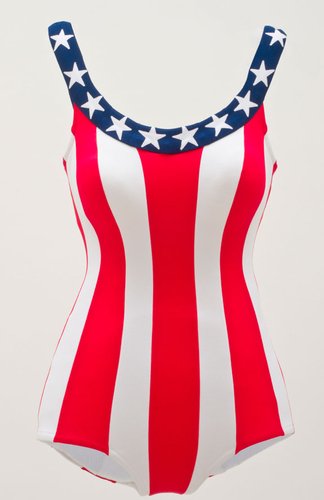
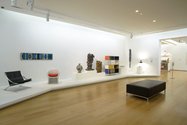
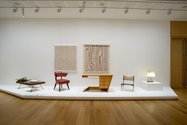
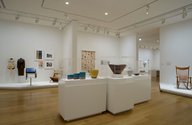
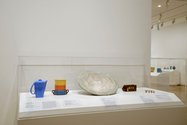
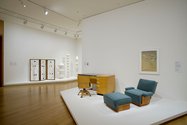
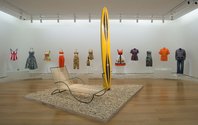
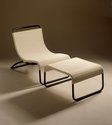
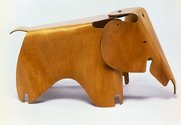
 Advertising in this column
Advertising in this column Two Rooms presents a program of residencies and projects
Two Rooms presents a program of residencies and projects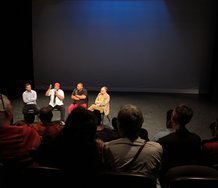
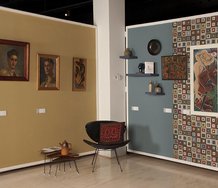

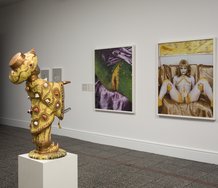
This Discussion has 0 comments.
Comment
Participate
Register to Participate.
Sign in
Sign in to an existing account.